Hola and welcome to Where on Planet Earth! In case you got here by accident and are not yet a subscriber, sign up below! For more visuals on our travels follow us on IG @whereonplanetearth
Last week we spent some time visiting Saxon villages in Romania, a collection of very quaint towns founded by Saxons who settled the area in the 12th century invited by the Hungarian king. Transylvania - today about 1/3 of Romania but its own region until 1918 - was then under the Hungary Empire. These Transylvania Saxons, as they were later deemed, were mostly of Germanic origins and came from the northwestern territories of the Roman Empire, such as Flanders, Lorraine, and Luxembourg.
This Romanian area where Saxons settled, and its mountains, served as a natural border for hundreds of years; the border between West and East, between Christianity and Islam. The Saxons protected that border by building charming towns surrounded by high walls and defensive towers, with massive fortified churches overlooking it all. These towns still stand today, but most of the Transylvania Saxons who built them are long gone, having left after WWII and then in subsequent migrant waves.
Still, their picturesque architecture and impressive fortified churches remain, drawing locals and tourists alike, making the area unique and interesting, and in many ways defining this part of Romania.
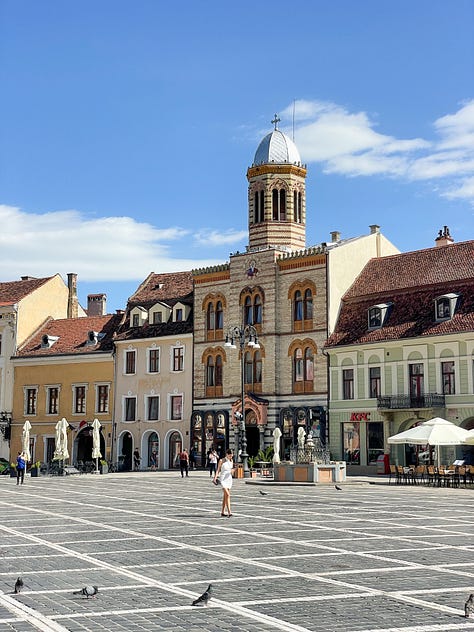
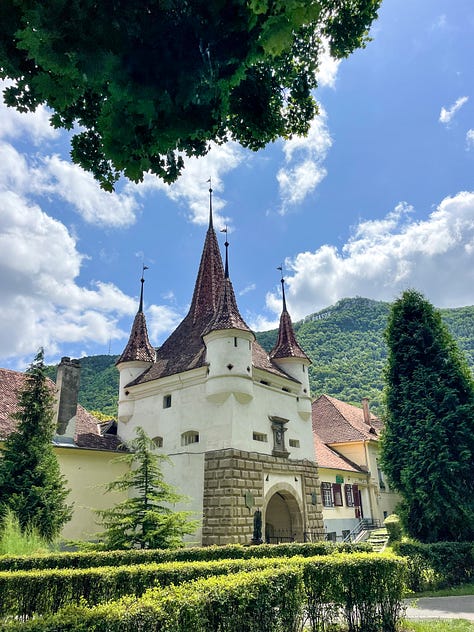

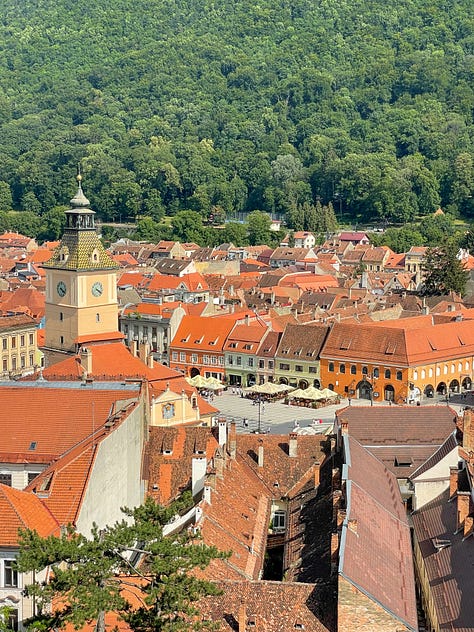
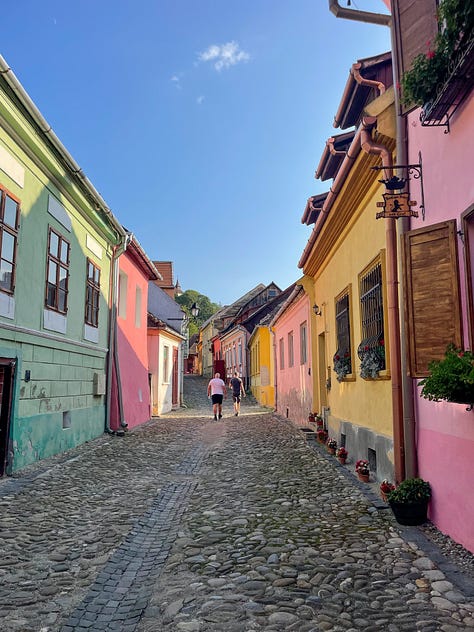
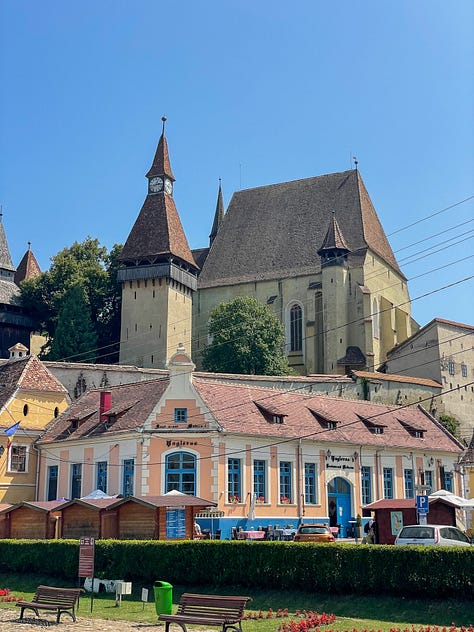
This reminded me of the many towns we have visited across the Balkans in which big and impressive mosques and synagogues still stand, but today no one prays in them and instead are used as concert halls or museums. In some cases the mosques are so many and so imposing that they define the skyline of the Christian Orthodox towns, such as in Bitola North Macedonia.
All of this made me reflect on how much of our present is shaped by the past, even when we don’t fully realize it, and even when we are not very fond of that past.
As an outsider it’s easy to see this when you travel, and in the Balkans it’s specially obvious as there are so many similarities across the region. As much as each country considers themselves extremely different from its neighbors, there are undeniable common threads tying them all together. After-all, their long histories are extremely intertwined, from the Roman and Byzantine Empires, to the Ottomans 500-year reign over the region, to the wave of communism that swept over them for half a century, to their ethnic nationalism and newfound democracies, they have a lot in common.
Today many people in the Balkans won’t have much good to say about the Ottoman Empire - who they saw as invaders - or the communists - who they saw as repressive - but so much of what the region is today is because of those eras.
Food is a clear example of this influence. Peppers were brought to the area by the Ottoman Empire and are now central to the Balkans cuisine, such as in Ajvar, a delicious spread made with roasted peppers and eaten basically everywhere in the region. Bureks, a crispy phyllo pie filled with cheese, meats, or veggies, are sold absolutely everywhere for breakfast and there is little doubt this was brought over by the Ottomans. Juicy kebabs, stuffed cabbage leaves, crispy baklava, the list goes on and on. Even the region’s love for pork has roots in the Ottoman Empire, since due to Islamic prohibition on pork the rulers couldn’t tax or take pigs from farmers, so its trade among locals flourish.
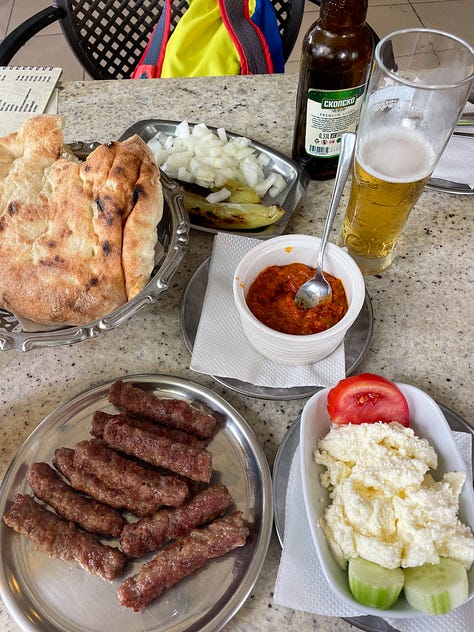
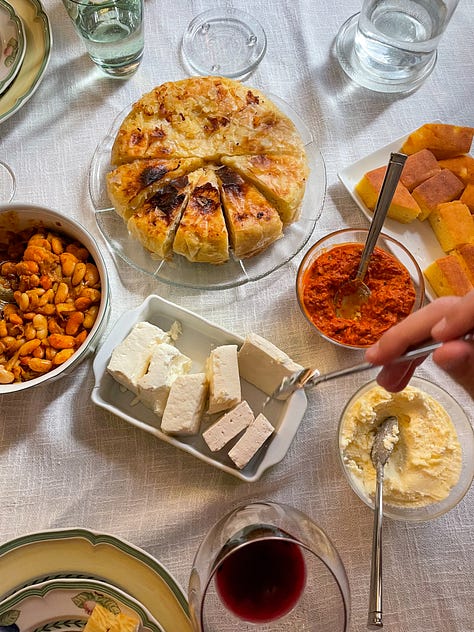
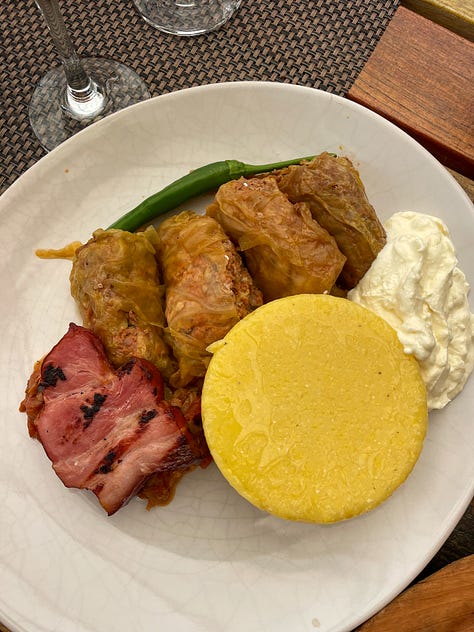
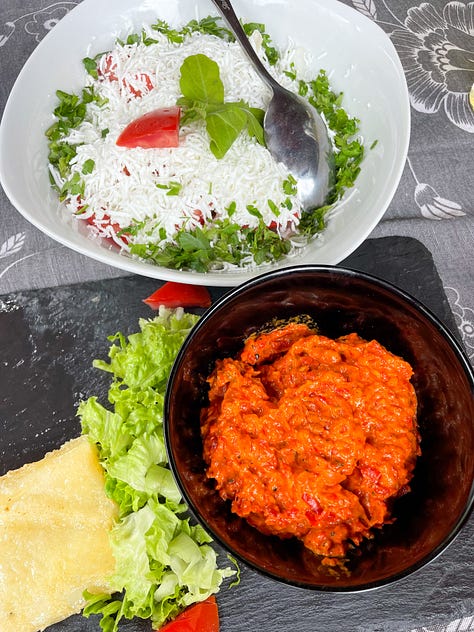
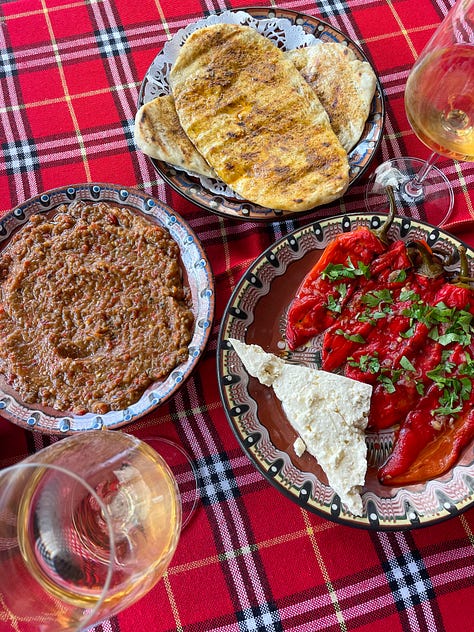
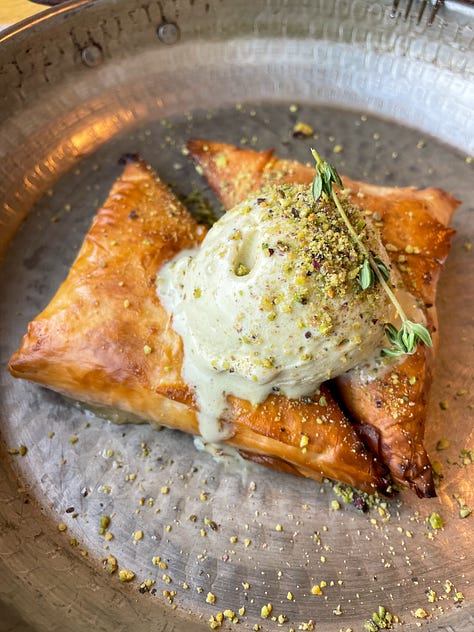
There is no way to erase 500 years of being part of something, anything! But of course you don’t even need that long of a time to be influenced. Balkans cuisine is also Austrian, Greek, Persian, Hungarian, German, etc etc - think goulash, breaded meats, pickled veggies, yogurt in meat dishes, moussaka, feta, and all those yummy things.
Even the communism regimes left their mark on the food, with for example the famous Shopska salad, which was invented by the Bulgarian national tourism company as part of a “local menu” to promote tourism (mostly targeted to Czechoslovakia tourists). The ingredients - tomatoes, cucumbers, onions, and cheese - were chosen because they resemble the Bulgarian flag. Today, the Shopska salad is Bulgaria’s national dish and found in restaurants all across the Balkans.
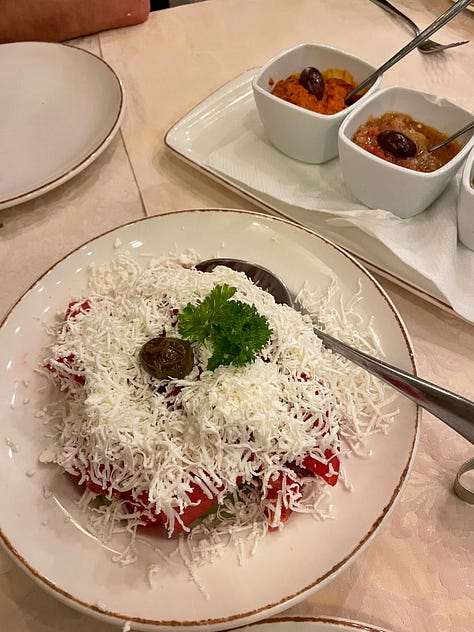
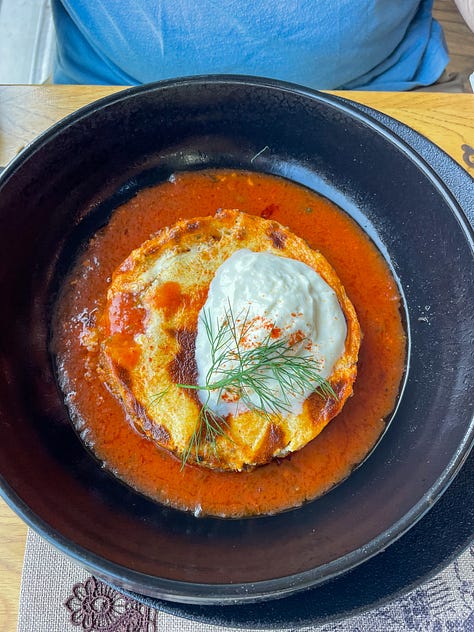
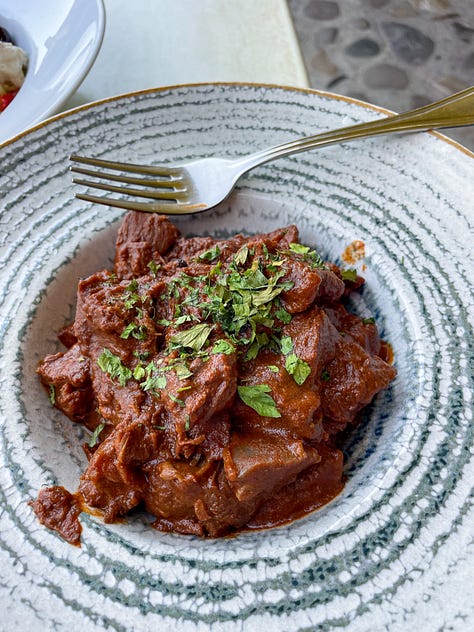
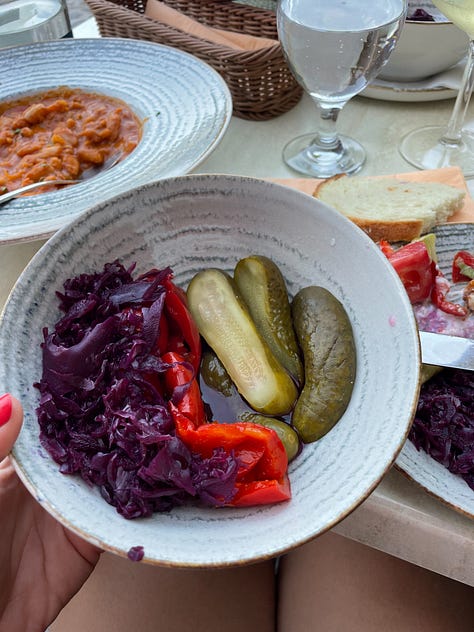
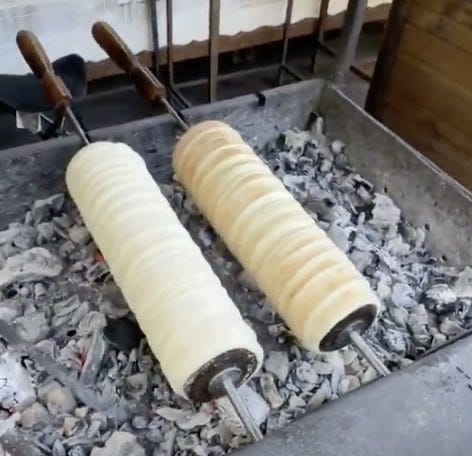
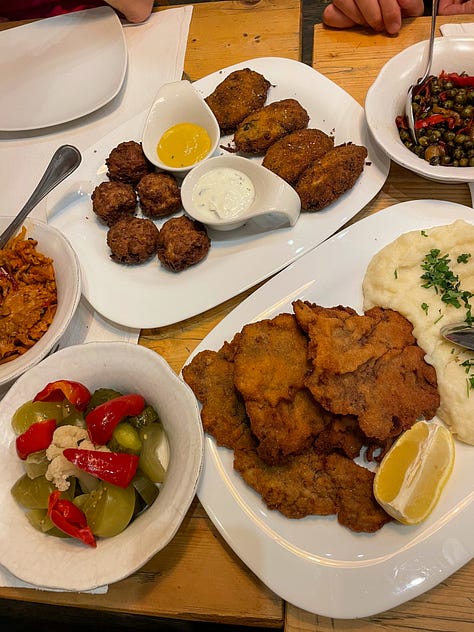
Balkans cuisine is even, if you can believe it, a bit Latin American! When we were in Albania and asked for a local dessert they brought us “trilece”, which was suspiciously similar to “tres leches” both in name and taste, a rich and moist sponge cake soaked in three milks (evaporated, condensed, and whole) that is eaten throughout Latin America. Turns out Mexican soap operas were extremely popular in Albania back in the 90s and an Albanian chef curious about the dessert shown on the TV reverse-engineered the recipe and made it a thing in Albania and beyond! *mind-blown*
In another unexpected twist, we also learned that American involvement in Nicaragua is what gave birth to our dear tres leches, which is today Nicaragua’s national dessert and widely eaten throughout Latin America. Colonial periods everywhere have transformed societies and what they eat, and this wasn’t different in Nicaragua, where Nestlé imported canned milks became a staple and eventually, through experimentation, came together as tres leches.
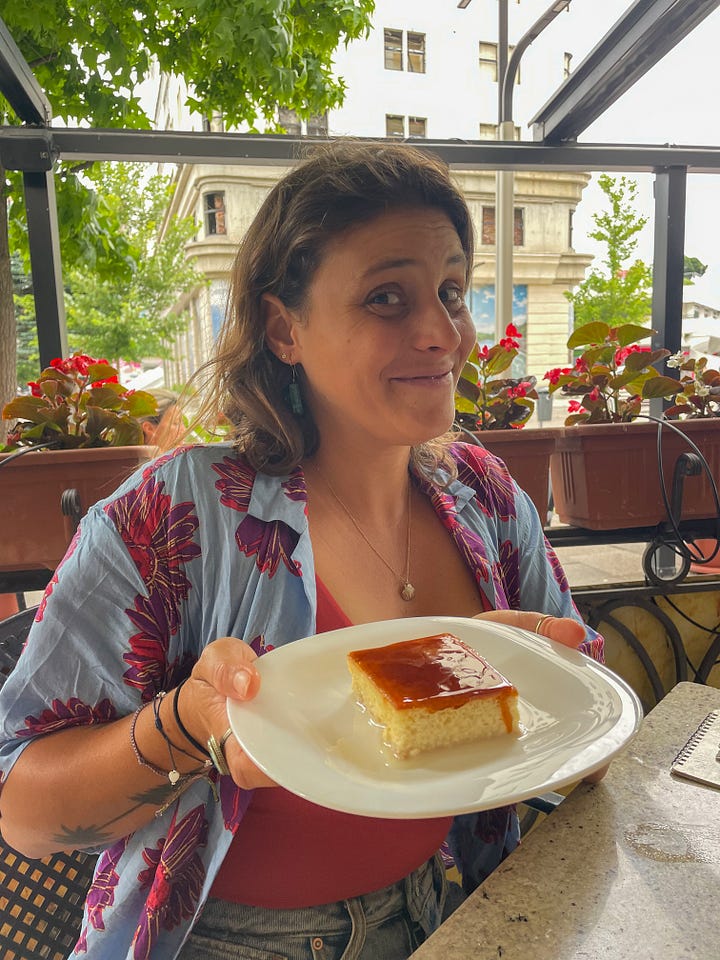
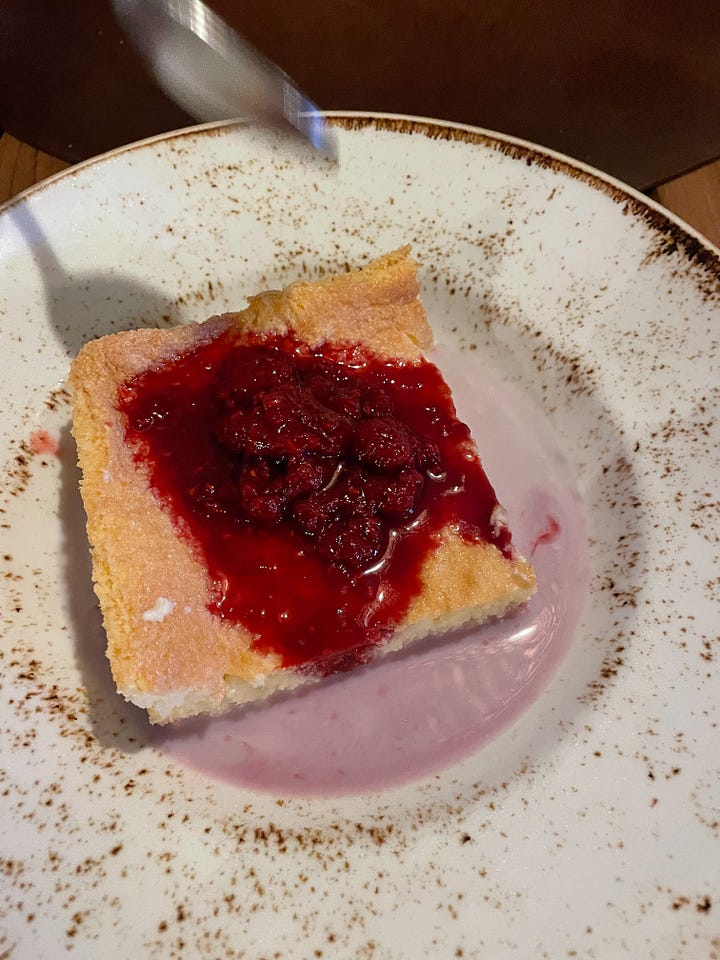
Language is also an obvious mark of history. Balkan languages were all influenced by similar forces, mainly Roman and Slavic, but each developed somewhat naturally on their own given the context surrounding it. Alphabets were being developed all over the place around the 10th century, including Cyrillic, which was born in Bulgaria and is today used in Russia, Serbia, North Macedonia, and many other countries. The Ottoman Empire didn’t force a language, but their influence left thousands of words still used today.
In the 19th century nationalism hit hard across the region and ethnic groups started modifying alphabets to suit their way of speaking. Then, Yugoslavia was formed and a big chunk of the area became a single country, but still many different languages were spoken. Confused much? me too. Today each country in the Balkans officially has its own language; many are entirely different, others share features, and some speak essentially the same language but with regional differences or using different alphabets.
It's been very interesting to travel across the region and hear and read the different languages, all connected in some way. The most shocking of all was arriving to Romania, as for the first time in a while we could read and somewhat understand what was being written; Romanian is a Romance language, just like Spanish, and it shares many similarities with Italian!
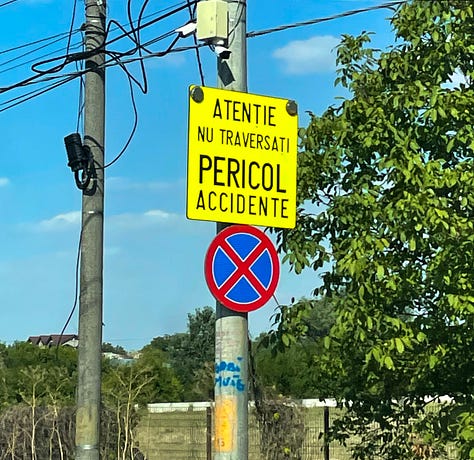

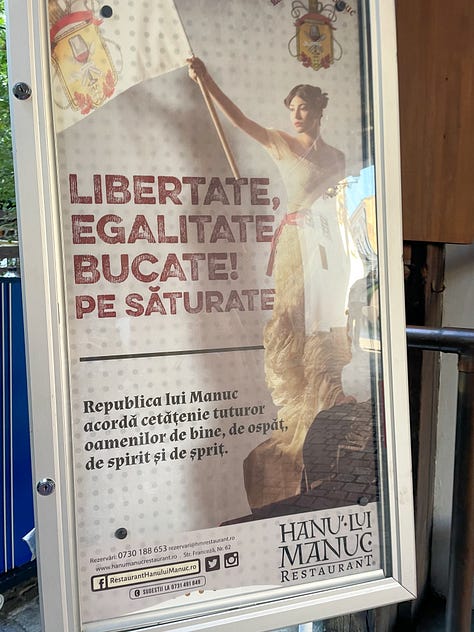
And then we arrive at the forbidden topic: religion! Much of what countries fervently believe in today was forced on them - or promoted with promises of better lives - back in the day, but no one like to tell that story. Latin America is a great example of this, which is mostly Roman Catholic simply because the Spaniards colonized that land and forced their religion onto the native population. Today that religion is an integral part of our culture, as religion is in so much of the world.
The Balkans region has a unique intersection of Orthodox Christianity, Islam, and Roman Catholic communities. A mix and match that in combination with the many ethnicities present in the region has led to countless violent conflicts. This religion mosaic came to develop based on who was ruling which piece of land back in the day, which benefits were granted to which believers, which Empire had more influence in which areas, and which ruler tried harder to squash any other believes but their own, among many many other factors.
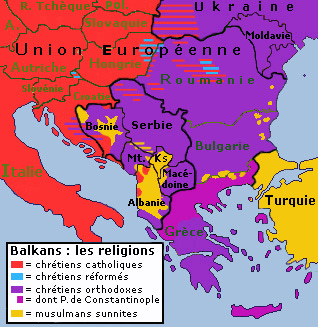
The region is even more unique because they also had half a century of communist rule, which preached atheism; sometimes forced - as in Albania - and sometimes a strong suggestion - as in Bulgaria. But, either way, atheism influenced society profoundly and this is obvious in two, somewhat contradictory, ways: a big chunk of people are either atheists or very “light” believers (they would say they believe in God but never pray, for instance), and the other are fervent believers, as if to get back all those those decades they could’t be. This split is interestingly not a young versus old divide, such as in much of the world, mostly because the older generation lived through communism and many were, and still are, atheists.
During the Ottomans rule many people converted to Islam and today there are muslim communities spread throughout the region, and also majority-muslim countries such as Albania, Kosovo, and Bosnia and Herzegovina. We are yet to visit Bosnia and Herzegovina but we spent time in the other two, and as someone who has visited many other majority muslim countries and has come to expect some restrictions, I was very surprised by how liberally they practice the religion. Think women not wearing hijabs and alcohol and pork being sold almost everywhere, as an example. It has been refreshing to travel throughout the region and go from Orthodox Christian countries to Muslim ones, with the only clear difference being how many churches versus mosques there are, nothing else highlighting a change in the majority religion.
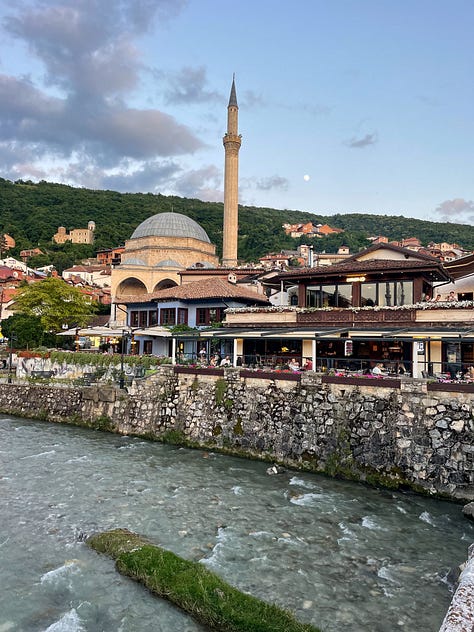
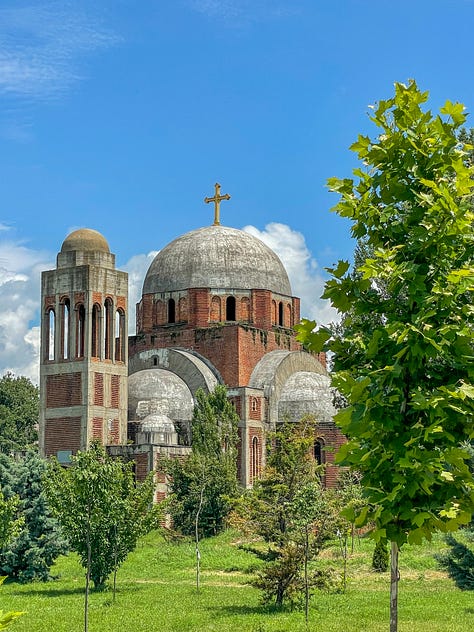
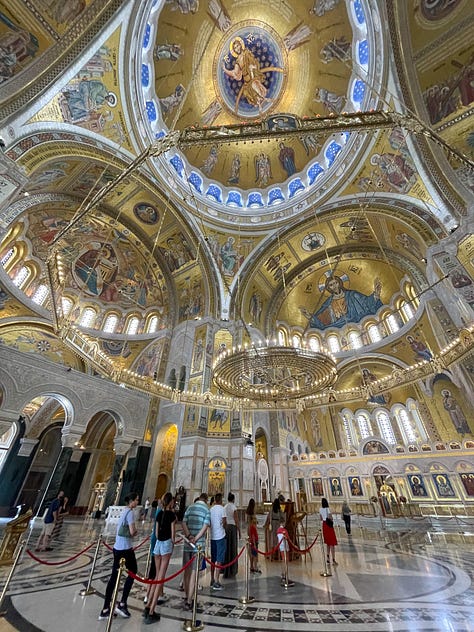
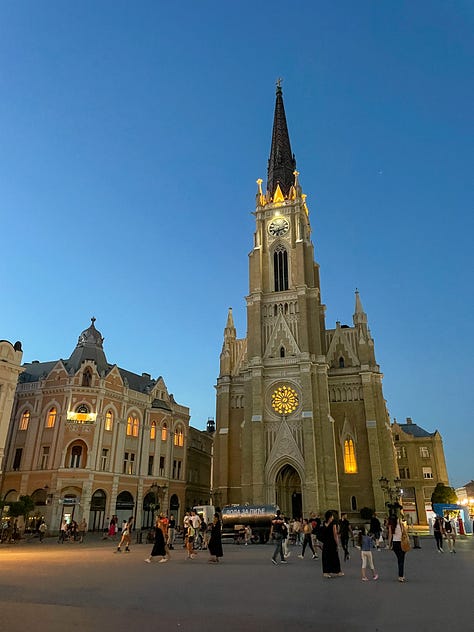
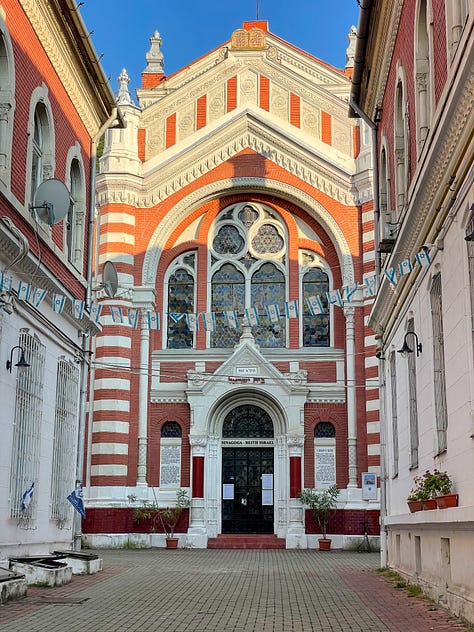
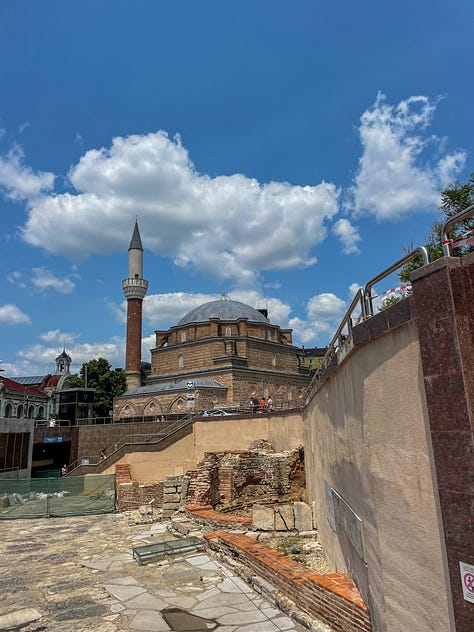
As I reflect on our journey through the Balkans, I am struck by the undeniable influence of history on the present. The past has left an indelible mark on these lands; on what they eat, what they speak, what they believe in, and much much more. Amongst all the complexities and conflicts that shape the region, there is so much that unites them. The past may shape us, but it is our choices in the present that determine the path ahead.
Where are we now?
We have spent about a week in Serbia and what a ride it has been. We started in Novi Sad, a beautiful town known for being one of the most liberal places in Serbia, and it delivered. Then we made our way to the capital, Belgrade, where we are at right now. A big graffiti welcomed us to the city, “Kosovo is Serbia”, and the truth is that those words have set the tone for our time here. We have made it a point - in a more direct way than usual - to interact with locals and have, sometimes pretty tense, conversations about Serbia’s past, how it’s perceived by outsiders like us, and how they view it. So far it has been both enlightening and depressing. In a couple of days we are headed to Bosnia and Herzegovina so more on all of this next week.


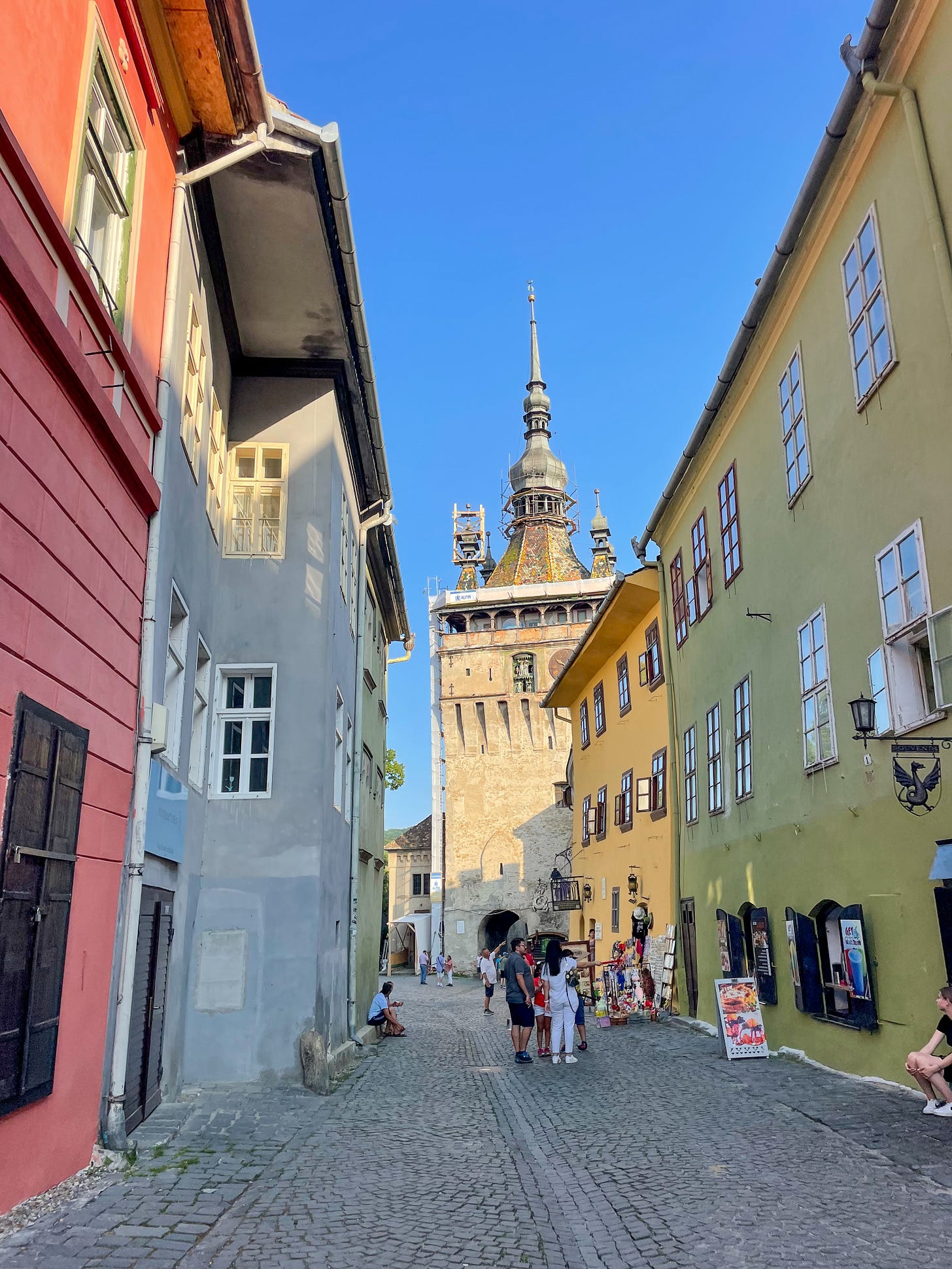
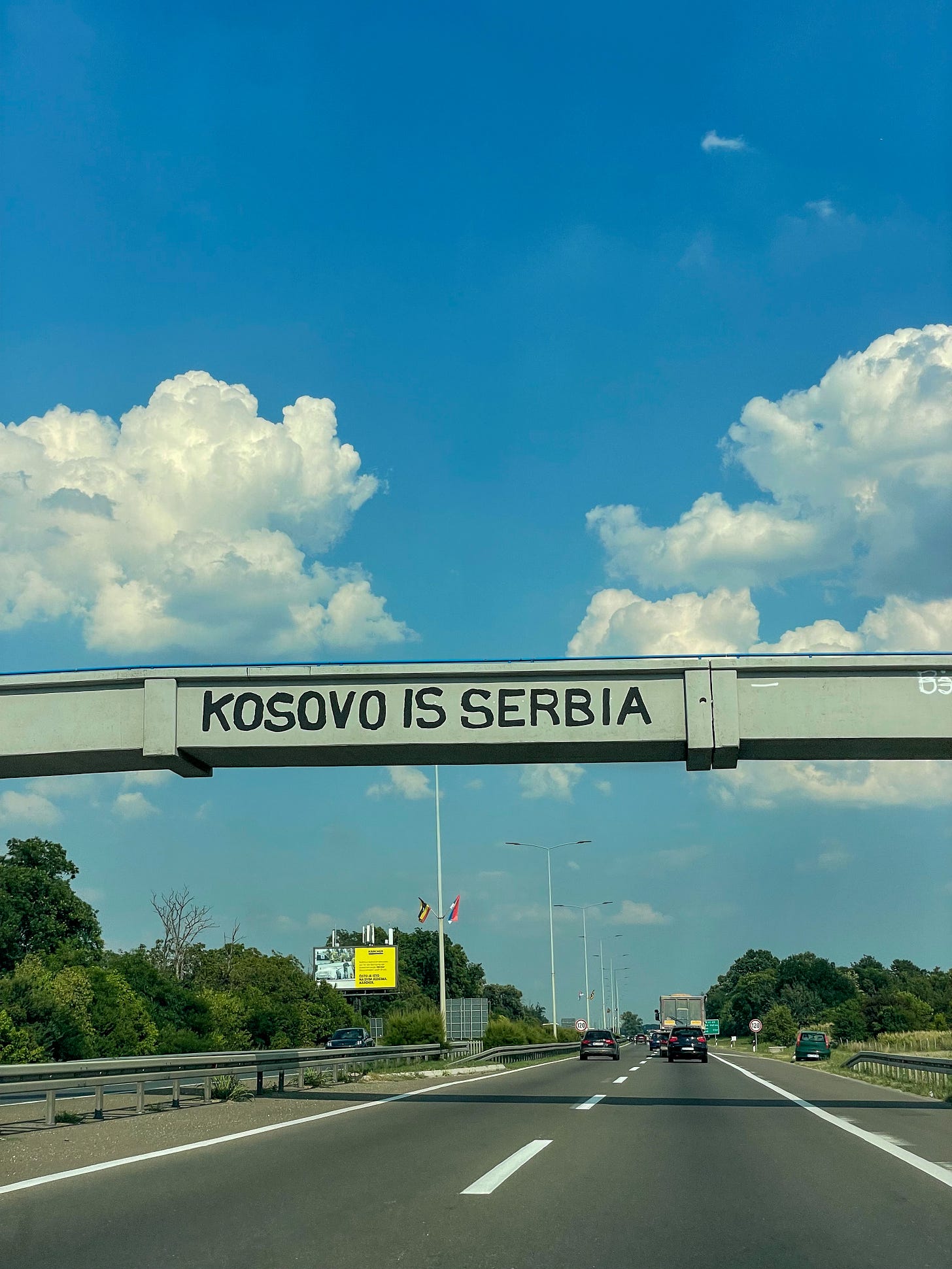
As always an excellent journal. Very informative, and beautifully written. I enjoy very much your journals. Keep posting them.
UN ENSAYO MUY BIEN ESCRITO E ILUSTRATIVO DE LOS PAISES DE LA PENINSULA BALCANICA.
GRACIAS POR OFRECERNOS UNA VARIADA E INTERESANTE INFORMACION ACERCA DE LAS GENTES, LAS COMIDAS, LOS PAISAJES, LAS IGLESIAS Y MOSQUEAS DE LOS DIFERENTES PAISES QUE FORMAN PARTE DE LOS BALCANES. LAS FOTOGRAFIAS SON EXCELENTES !